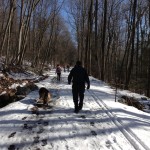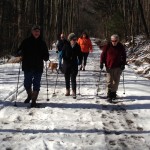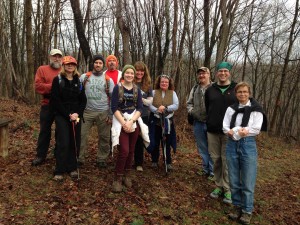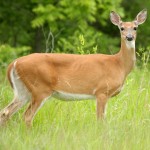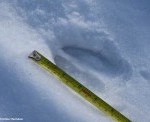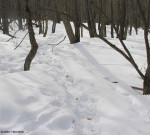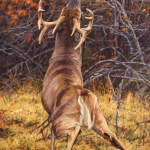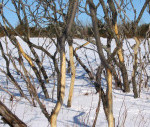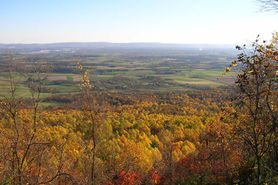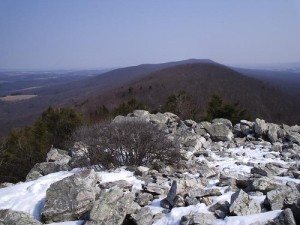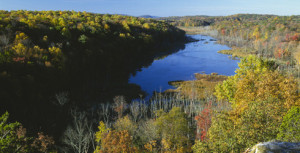On Sat., June 12th (Sunday) – Join the DOC on a canoe trip from Blue Mountain Outfitters (BMO) to West Fairview for an opportunity to observe the egrets, cormorants, and herons raise their young on Wade Island. This trip will be under the guidance of BMO with a cost of $29.40 per person for a group of 10, and $31.80 for less than 10. Call 395-2462 or email dtakach@duncannonatc.org to register. We will meet at the Duncannon Family Health Center to carpool at 9:00 am. or alternately at BMO at 9:30 am. Bring water, a snack, and binoculars. Don’t forget your sunscreen. If you register for this event please do not cancel unless absolutely necessary. We need that magic 10 or more!!!!!!!!
Author Archives: Deb Takach
DOC MAY 14TH CHILDREN’S EVENT
On Sat., May 14th – Come to a kid friendly scavenger hunt at the Cornerstone Christian Church Trails for a leisurely paced 1.43 mile hike over easy terrain. See how many hidden things can be found along the trail. This hike is appropriate for children 5 and up. Adults without children are also welcome. Meet at the Cornerstone Christian Church, Duncannon at 10:00 am. Call 395-2462 or email dtakach@duncannonatc.org to register.
DOC April Event – Plants and Animals at Wildwood
On Sat., April 16th – Come to an adult, family, kid, dog friendly 3 mile average paced hike on easy terrain at the Wildwood Nature Center. See how many items you can cross off your observation card. Dogs must be leased. Bring water, a snack, and binoculars. We will meet at 9:00 am. at the Duncannon Family Health Center to carpool or alternately at the nature center at 9:30 am. Call 395-2462 or email dtakach@duncannonatc.org to register.
DOC Feb. Hike: Leave No Trace and Hiking Etiquette
- Leading the pack.
- Bringing up the rear.
Our hike on the Stoney Valley Rail Trail was a leisurely 4 mile hike, two in and two out. The weather was perfect, almost reaching 60 degrees. While the air was warm there was still the remnants of snow and ice underfoot. It was a tad scary driving back to the trail head on a snowy, icy dirt road. At the last section if one did not stay in the tire tracks the risk of a sudden drop off the road into the forests was evident. Fortunately we all made it without incident.
Prior to the hike we had a discussion on Leave No Trace and Hiking Etiquette. A 10 question quiz started us off on an interesting talk on the do’s and don’ts of hiking. Take the quiz below and then check your answers to see how well you do.
HIKING ETIQUETTE AND LEAVE NO TRACE – TRUE OR FALSE?
- 1. It is okay to leave apple cores and other food items in the woods for animals to eat.
2. Defecate 200 feet and urinate 100 feet from a trail, shelter or water source.
3. Hikers should yield to mountain bikers.
4. Pass another hiker on the right and let them know you are passing.
5. Hikers stay on the uphill side when horses are passing on an incline.
6. Cairns are acceptable as a means of marking trail heads since they are made of natural material.
7. Hikers going downhill should yield to hikers coming uphill.
8. Since flora and fauna are so prevalent in the forests it is permissible to take small samples.
9. You may veer off the trail to bushwhack or follow a path that proves an easier way to traverse to conserve your energy.
10. Make all fires in a fire ring and use small diameter wood found on the ground.
Answers:
#1 False – Leaving food items will attract animals and insects into the hiking areas exposing hikers to rabies or other diseases. It also disrupts the animals’ natural foraging behaviors. Other hikers do not appreciate looking at your garbage. (Incidentally, orange peels last forever, and to my knowledge I do not know of any animal that eats orange peels!)
#2 True – Defecate by digging a cathole 6″ x 6″ x 6″ (some say 6″ x 8″), removing the dirt plug and putting it to the side. Do your duty in the hole and replace the dirt plug. Take any toilet paper and hygiene products with you. Urinate 100 ft. away from a trail, shelter, or water source, again taking any toilet paper or hygiene products with you. (When on an expedition with Outward Bound in North Carolina we rated our toilet areas. A beautiful view with a log to sit on over your cathole and a cool breeze was rated 5 stars. When you returned from your duty you were required to kiss the shovel as proof that you dug your cathole properly, YUCK!) Another tidbit of info, when brushing your teeth move 200 feet away from water sources and broadcast your spit from your mouth in a half-circular pattern to spread out the toothpaste scented water. The same holds true for disposing of waste water.
#3 False – ATV’s yield to everything, hikers and bikers yield to horses, bikers yield to hikers.
#4 False – When passing another hiker you pass on the left notifying them of your intentions by saying something like, “Passing on your left.” Greet people you meet. This will help them remember you if something should happen and a search for you is necessary. If hiking and you meet someone that gives you those creepy vibes and you are ahead of your group or worse yet, hiking alone, it is wise to say something like, ” I must be ahead of my group etc.”
#5 False – Hikers stay on the downhill side when yielding to a horse on an incline since horses usually run uphill when spooked.
#6 True or False – This question led to a lot of discussion. Some of us felt it was true while other had the opposite opinion. Upon further research it was found that cairns, piles of rocks to indicate a path, have been used since the 1800’s in the Northeastern United States, usually above the tree line. According the the Center for Outdoor Ethics it is permissible to build authorized cairns and they should not be tampered with. Otherwise cairns should not be constructed since they lead to rogue trails and confuse other hikers.
#7 True – Hikers going downhill should yield to those coming up. Still, many hikers who are climbing may yield to provide a short respite to their labors. When yielding or stopping for a rest step off the trail selecting a used area or a durable surface. When hiking in a group, it is the groups responsibility to yield to single or pair hikers. Since it is harder for a group to get of the trail often times the other hikers will let you pass first, It is their call.
#8 False – Go by the saying, “Take nothing but pictures and leave nothing but footprints.” If every hiker took plants and other items with them their would be nothing left to see, Good foragers, people picking edible plants, on the other hand will pick plants knowing to follow the policy of a sample here and a sample there leaving behind plants for regeneration.
#9 False – When you bushwhack you kill additional plants and create rogue trails which often lead to erosion. Hikers want to see nature, not a series of trails in all directions.
#10 True – Leave standing dead trees, called snags, and fallen trees alone since they provide a source of food and habitat. Do NOT cut live trees! Do not build fire rings when you can use those which already exist. Make sure you are in an area where fires are permitted. Clear all leaves and debris away from the fire ring. Make sure your fire is under control at all times and do not leave it unattended. Make sure the fire is out when done. Forest fires are most common in the late fall and early spring when there are no leaves on the trees prohibiting the sun from hitting the leaf litter on the ground and drying it out.
So how did you do? One bit of info left unsaid was the importance of keeping your noise level down in respect for other hikers, and please do not play music for others to hear. If you wish to read more about the 7 principals of Leave No Trace go to https://duncannonatc.org/leave-no-trace/.
Works cited:
Leave No Trace Center for Outdoor Ethics/LNT.org “The Leave No Trace and Cairns,” 2014 Web. 20 Mar,. 2016
DOC Middle Creek Wildlife Management Area – Snow Geese and Tundra Swans
 March 12th – Come to the Middle Creek Wildlife Management Area to observe and learn about the thousands of Snow Geese and Tundra Swans as they migrate to this important way station. Then hike an average-paced 6 mile hike over moderate to easy terrain on a series of trails that form a loop back to the visitor’s center. There are 2 climbs ranging from 300 ft to 400 ft. Meet at the Duncannon Family Health Center to carpool at 8:30 a.m. or alternately at the K-Mart parking lot at 9:00am. Call 395-2462 or email dtakach@duncannonatc.org to register. Please reimburse drivers 10 cents per mile and for turnpike tolls. Bring your cameras and binoculars if you have them.
March 12th – Come to the Middle Creek Wildlife Management Area to observe and learn about the thousands of Snow Geese and Tundra Swans as they migrate to this important way station. Then hike an average-paced 6 mile hike over moderate to easy terrain on a series of trails that form a loop back to the visitor’s center. There are 2 climbs ranging from 300 ft to 400 ft. Meet at the Duncannon Family Health Center to carpool at 8:30 a.m. or alternately at the K-Mart parking lot at 9:00am. Call 395-2462 or email dtakach@duncannonatc.org to register. Please reimburse drivers 10 cents per mile and for turnpike tolls. Bring your cameras and binoculars if you have them.
DOC Little Buffalo Hike and White Tailed Deer
On Saturday, January the 16th a group of daring hikers braved the weather to hike the trails of Little Buffalo State Park. It was a cold, damp, drizzly morning to start and we did get rained on for a short period of time. We were fortunate that the sun did stick its head out a few times before the wind hit. With all the climbing we did the weather didn’t phase us.
A total of 5.5 miles was traversed over trails where we counted 10 climbs. We started at Middle Ridge Trail to Buffalo Creek Trail and connected with the Buffalo Ridge Trail, finally ending up at the covered bridge, then walked back to the office parking lot for the completion of the hike.
- Doe, Female, White Tailed Deer
- Typical deer track with dew claws not evident,
- Deer trails in winter are called yards.
The theme for the event was, “The White Tailed Deer”. The white tailed deer, belonging to the Cervidae family, are referred to as Cervids meaning hooved. Most people are familiar with deer tracks which exemplify a cloven or split hoof. When deer walk through deep mud or heavier deer leave prints you can see the dew claw impressions. There are two dew claws above the back side of each hoof.
- Buck eating branch ends.
- Deer eat bark in the winter.
White tailed deer are also classified ruminants meaning multiple stomachs and cud chewing animals. Deer have four stomachs. They are active at dusk and dawn making them crepuscular mammals. During this time they come out of cover, quickly eat, return to cover, regurgitate their food from the first stomach, and chew it (chewing their cud). This behavior limits the amount of time the deer are out in the open exposed to predators. Deer eating habits change depending upon what is available each season. They are vegetarians eating herbaceous and woody plants. In Spring and Summer they will feed on green plants. Hard and soft mast are their preferred food source during the fall. This includes nuts, buds, seeds,and fruit. In winter food sources are scarce when they select bark, tree branches (ends), vines, and bushes. Deer will gravitate toward food sources providing the most nutrients, one of the reasons why they prefer acorns in the fall and hemlock during the winter months. These items are high in nutritional value.
No matter the season, do not feed the deer! You may think you are helping them survive when you are really increasing their chances of death and disease. Feeding the deer disrupts the micro-organisms in their digestive track which can often lead to death. In winter deer will migrate long distances to reach feeding stations causing them to use up their fat reserves. Feeding deer results in the congregation of large groups of deer exposing them to the diseases such as: CWD, Chronic Wasting Disease, and EHD, Epizootic Hemmorrhagic Disease. Continue reading
DOC February Hike Stoney Valley Trail – Leave No Trace, Hiking Etiquette
 Feb. 20th – Join the DOC at the Stoney Valley Rail Trail for an average paced 4 mile hike on flat terrain. We will be discussing Leave No Trace and Hiking Etiquette. The hike will consist of a walk two mile in and back for a total of 4 miles. This hike will be canceled if snow makes it impossible to gain access to the Stoney Valley Trail, in that the dirt road may not be maintained. Wear orange. Meet at the Duncannon Family Health Center at 9:00 am. or alternately at Dauphin Park and Ride at 9:30 am. Call 395-2462 or email dtakach@duncannonatc.org to register.
Feb. 20th – Join the DOC at the Stoney Valley Rail Trail for an average paced 4 mile hike on flat terrain. We will be discussing Leave No Trace and Hiking Etiquette. The hike will consist of a walk two mile in and back for a total of 4 miles. This hike will be canceled if snow makes it impossible to gain access to the Stoney Valley Trail, in that the dirt road may not be maintained. Wear orange. Meet at the Duncannon Family Health Center at 9:00 am. or alternately at Dauphin Park and Ride at 9:30 am. Call 395-2462 or email dtakach@duncannonatc.org to register.
Duncannon Outdoor Club 2016 Schedule
 Schedule: The Duncannon Outdoor Club will host a hike every third Saturday of each Month. The time of day when the hike occurs will depend on the hike event for that particular Saturday. Dates may change due to conflicts. Call Deb Takach at 395-2462 or email dtakach@duncannonatc.org to register for any of the following hikes. the ground make sure to wear hiking boots and if you have micro spikes or yak tracks bring them. Learn about the White Tailed Deer. Meet at the Duncannon Family Health Center at 9:00 am. or alternately at Little Buffalo Office parking lot at 9:30am. Call 395-2462 or email dtakach@duncannonatc.org to register.
Schedule: The Duncannon Outdoor Club will host a hike every third Saturday of each Month. The time of day when the hike occurs will depend on the hike event for that particular Saturday. Dates may change due to conflicts. Call Deb Takach at 395-2462 or email dtakach@duncannonatc.org to register for any of the following hikes. the ground make sure to wear hiking boots and if you have micro spikes or yak tracks bring them. Learn about the White Tailed Deer. Meet at the Duncannon Family Health Center at 9:00 am. or alternately at Little Buffalo Office parking lot at 9:30am. Call 395-2462 or email dtakach@duncannonatc.org to register.
Feb. 20th – Come to an average paced in and out hike on the Stoney Valley Rail Trail for a total of 4 miles on easy terrain. We will be discussing Leave No Trace and hiking etiquette. Meet at 9:00 at the Duncannon Family Health Center or alternately at the Dauphin Park and Ride at 9:30 am. Call 395-2462 or email dtakach@duncannonatc.org to register.
Mar. 12th – Come to the Middle Creek Wildlife Management Area and observe the migration of thousands of Snow Geese and Tundra Swans as they touch down at this important way station. Then hike an average paced 6 mile hike over moderate to easy terrain on a series of trails that form a loop back to the visitor’s center. There are 2 climbs ranging from 300 to 400 ft. Meet at the Duncannon Family Health Center to carpool at 8:30 am or alternately at the Kmart parking lot at 9:00am. Call 395-2462 or email dtakach@duncannonatc.org to register. Please reimburse drivers 10 cents per mile and for turnpike tolls. Bring your cameras and binoculars if you have them.
April 16th – Come to a family, kid, dog friendly 3 mile average paced hike on easy terrain at the Wildwood Nature Center. See how many items you can cross off your observation card. Dogs must be leased. Meet at the Duncannon Family Health Center at 9:00 am to carpool or alternately at the nature center at 9:30 am. Call 395-2462 or email dtakach@duncannonatc.org to register.
May 14th – Come a kid friendly scavenger hunt at the Cornerstone Christian Church Trails for a leisurely paced 1.43 mile hike over easy terrain. See how many hidden things can be found along the trail. This hike is appropriate for children 5 and up. Adults without children are also welcome. Meet at the Cornerstone Christian Church, Duncannon at 10:00 am. Call 395-2462 or email dtakach@duncannonatc.org to register.
June 12th (Sunday) – Join the DOC on a canoe trip from Blue Mountain Outfitters (BMO) to West Fairview for an opportunity to observe the egrets, cormorants, and herons raise their young on Wade Island. This trip will be under the guidance of Blue Mountain Outfitters with a cost of $29.40 per person for a group of 10, and $31.80 for less. Call 395-2462 or email dtakach@duncannonatc.org to register. We will meet at the Duncannon Family Health Center to carpool at 9:00 am. or alternately at BMO at 9:30 am.
July 16th – Join us for two, 1 mile hikes at Big Spring State Park in Blain. Witness the dying giant Hemlocks, and then hike to an unfinished railroad tunnel. Both hikes are average paced over moderate terrain. Bring a lunch. Learn about the Wooly Adelgid and how it is endangering our state tree, the Hemlock. Meet at the Duncannon Family Health Center at 10:00 am. to carpool. Please pay drivers 10 cents per mile for gas (80 miles total). Call 395-2462 or email dtakach@duncannonatc.org to register.
Aug. 20th – Hike from Scotts Farm to Sherwood Drive and back for a total of 2 miles on easy terrain at an average pace. We will learn to identify the different forms of poison ivy and poison sumac. We will be meeting at 9:00 am. at the Duncannon Family Health Center. Call 395-2462 or email dtakach@duncannonatc.org to register. This is a dog friendly hike, however, dogs must be leashed.
Sept. 17th – Hike up Hawk Rock at night. Bring flashlights or headlamps. We will be hiking in and out for a total of two miles over moderate to strenuous terrain at an average pace. At the top take in the view of Duncannon and the Juniata, Susquehanna rivers. Once at the top we will learn about the elusive critter the Porcupine. Meet at 7:00 pm. at the AT trailhead to Hawk Rock (across from Tubby’s Nightclub). Call 395-2462 or email dtakach@duncannonatc.org to register.
Oct. 15th – Join the DOC for a 3 mile average paced night hike through the wooded cross country trails behind Susquenita High School. The terrain is moderate to strenuous with a few short climbs. Stop at the abandoned cemetery for some scary stories told by Wilhalmina Dorotheea Roskabower Kaufman. Bring a sit upon if you wish to sit during the story telling. Bring flashlights or headlamps. Meet at the left side of the Susquenita High School Parking lot closest to the building at 7:00 pm. (309 Schoolhouse Rd. Duncannon – along 11/15) Call 395-2462 or email dtakach@duncannonatc.org to register.
Nov. 20th Want to learn how to identify trees? Come out for a hike with the DOC as we learn the secrets to tree identification. We will hike in and out for a total of 2 miles at an average pace over easy terrain off RT325 on state game lands. Make sure to wear orange. Meet at the Duncannon Family Health Center at 9:00 am to carpool or alternately at 9:30 am. at the intersection of RT225 and RT325 (parking area 40.38867,-76.94168). Call 648-8226 or email psmith@duncannonatc.org to register.
Dec. 17th – Come to Pine Grove Furnace and hike from the furnace stack to Railroad Bed Road, to Pole Steeple, and the Appalachian Trail for a 7 mile average paced loop hike on moderate to strenuous terrain. Learn about Lyme Disease and how PA has been the number one state for the most infections for the last 5 years. Bring micro spikes or Yak Tracks if you have them and there is snow on the mountain tops as we will be climbing a mountain that raises 500 feet in three quarters of a mile. We will meet at 8:30 am. at the Duncannon Family Health Center to carpool or alternately at the furnace stack parking lot at Pine Grove Furnace around 9:30 am. Call 395-2462 or email dtakach@duncannonatc.org to register. Wear orange.
Waggoner’s Gap Hike – The Kittitinny Ridge and The Five Water Gaps
On Saturday, Nov. 21st the Duncannon Outdoor Club hiked approximately two miles on a VERY rocky section of the Tuscarora Trail at Waggoner’s Gap on the Kittatinny Ridge. It was a beautiful day and the mountaintop views were spectacular! Only one raptor flew by and it was identified as a Red tailed Hawk. (A raptor being a bird with a hooked beak and having talons.). After spending a little time looking for other raptors the group headed out on the trail.
The Kittatinny Ridge is a 200 mile uninterrupted forest that begins in the northern end of New Jersey, continues through Pennsylvania, and ends at the Maryland state line. It provides habitat for many species, especially those that cannot survive in fragmented forests.
Rain and snow falling on the forested ridge provides a water source for creeks, seasonal water sources, vernal ponds, and wet lands. It also is a major source of drinking water for the thousands of people living below the ridge.
DOC Family Christmas Trails Outing – Theme: Where Do Animals Go In Winter?

 On Saturday, December 19th join the DOC for a night out at the Litte Buffalo State Park’s Christmas Trails. This event is for the whole family, especially the little ones. Learn where common animals go in the winter and then walk the quarter mile trail lit with lights and decorated with many Christmas displays. Stop at the North Pole for hot chocolate and cookies on the way. We will be meeting at the Duncannon Family Health Center at 6:30 pm. to carpool. Alternatively meet at the park office at 7:00 pm. Call 395-2462 or email dtakach@duncannonatc.org to register. Donations for the trail will be accepted and a small fee may be asked for the hot chocolate and cookies.
On Saturday, December 19th join the DOC for a night out at the Litte Buffalo State Park’s Christmas Trails. This event is for the whole family, especially the little ones. Learn where common animals go in the winter and then walk the quarter mile trail lit with lights and decorated with many Christmas displays. Stop at the North Pole for hot chocolate and cookies on the way. We will be meeting at the Duncannon Family Health Center at 6:30 pm. to carpool. Alternatively meet at the park office at 7:00 pm. Call 395-2462 or email dtakach@duncannonatc.org to register. Donations for the trail will be accepted and a small fee may be asked for the hot chocolate and cookies.


